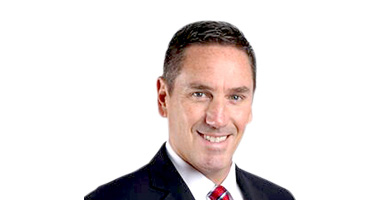Pre- and post-merger opportunities and risks
The path to raising capital and bringing businesses to public markets has gained acceptance as an alternative to the IPO, with more than 200 SPACs created in 2020 and at least 100 in 2021 to date. Special purpose acquisition companies (SPACs) have a growing following of investors ranging from private equity funds to the general public. Enthusiasm, however, should be tempered with proper financial and tax structuring and preparation, which make the difference between a successful deal and losing out.
To shine a light on benefits and cautions, Sportico, a digital content company providing sports industry news and information, asked four Grant Thornton professionals for their insights into how SPACs — and targets — can be best positioned for success.
“A big advantage is timing,” replied Jason Pizza, national managing partner in Transaction Accounting and IPO Readiness Services. “Between underwriting, roadshow and marketing, a traditional IPO takes anywhere from six to 18 months. Because the SPAC has already gone through the underwriting process, the going-public process is one-half to one-third the time — three to six months. Companies can get into the marketplace quicker, achieving their ultimate goal of liquidity and setting the right value for their business.”
M&A Tax Services Partner Melanie Krygier noted: “We’ve also seen recently that investors in potential SPAC target companies may be wary of potential tax increases. This may be driving some of the movement to SPACs as investors want to seek liquidity events faster to lock in taxable capital gains at current lower rates.”
Global Services Industry Leader Sean Denham added: “The word a lot of people use is ‘flexibility.’ SPACs are a negotiated deal, which is appealing to the sellers. For example, they can have an earnout as a component of the deal — something you don’t see in a traditional IPO.”
What is the reception for sports and media businesses around SPACs?
Denham explained: “The SPAC structure itself is industry agnostic. Sectors that tend to be more attractive are those that have the potential for high growth in the near term, are dependent on attaining scale quickly to achieve optimal economics, or are in industries that can benefit from consolidation.”
Media & Entertainment Audit Services Leader Micah Dekofsky added: “Sports, gaming and media are industries in transformational stages that can benefit from the opportunities SPACs provide, such as ease of access to and relative cost of capital, while monetizing highly sought-after brands with built-in, loyal audiences. This is key for those organizations whose plan to attain scale is through consolidation, user acquisition and/or content library enhancement, such as gaming and media companies. Another factor that may be driving the frenzied SPAC activity is the increasing private market valuations that leave capital market transactions as the only reasonable exit strategy.”
What should companies be doing to increase their chances of SPAC success?
“Preparation is key,” said Krygier. “We expect there to be a tremendous amount of competition for acquisition targets in the months and years ahead. There were hundreds of SPACs raised in 2020 and early 2021. The acquisition targets for both SPACs and private equity overlap significantly, with both having plenty of dry powder. Regardless of the type of SPAC-acquirer, target companies that have the foresight to plan for any potential roadblocks and mitigating those in advance of the due diligence phase will pay dividends in the end. From a tax point of view, a target should consider fully standing up its tax reporting functionality to meet all the reporting requirements of a public company. Pre-acquisition tax diligence on the target side is a worthwhile investment to identify and mitigate risks to the extent possible, heading off potential deal issues since SPAC transactions can be quite tenuous.”
Denham noted: “All things equal from a value perspective, investors are looking for a target company that has the infrastructure in place to be a public company. From a regulatory perspective, that means having financial reports that meet Public Company Accounting Oversight Board standards. In our experience, companies that take the initiative with financial and tax due diligence to make themselves ready for acquisition are more attractive targets. SPACs have a finite amount of time to vet a target and obtain board approval; preparation removes significant hurdles.”
Another component to SPACs is the reception from stock market investors. Why are they so interested in SPACs today?
Denham replied: “We’ve seen a clear evolution in SPAC structure over the past 15 years. Today the current structure provides full optionality for equity holders to redeem, whether or not there's a majority vote to approve the merger. That level of investor protection has strengthened the structure and given it a lot more acceptance in the equity markets.”
What are the risks involved with SPACs that have to be considered?
“SPAC sponsors fund the underwriting process,” said Pizza. “For that investment, sponsors may expect to own up to 20% of a target company. However, until the negotiations occur, sponsors don’t know what their financial stake will be. That equity result is a gamble on their part. A SPAC often has to sell itself to its target operating company, because the target may have the choice of going public through multiple SPAC options. The division of equity is often part of those negotiations. Then, SPAC shareholders have two separate decisions — to vote to approve the merger, and whether to redeem their holdings for the original per-share IPO capital. If too many investors redeem their holdings, there may not be enough cash to facilitate the deal as originally negotiated. In addition, there may need to be further negotiations and/or additional private investors to fund the deal.”
Krygier added: “Some transactions can fall through because of structural matters. Non-U.S. target companies considering deals with U.S.-domiciled SPACs can be difficult to navigate because the targets may never have been pulled into the U.S. federal tax net. Complying with U.S. tax regulations can require a recast of their tax accounting. How the tax profile will change by being subject to U.S. taxation can dramatically impact the investment return. Being aware of and intentional regarding cross-border transaction structure with a SPAC is critical to address these potential risks.”
When a SPAC files for an IPO and later to acquire a target, what do regulators look for?
Denham explained: “Regulators are paying attention to how the SPAC is structured, how compensation works for executives, directors and advisors, what dilution will look like for shareholders in multiple deal scenarios, and any current and potential conflicts of interest. The last item can be a particular focus when private equity firms sponsor SPACs and may have holdings that are potential targets. As you progress toward the merger, regulators want to know the targets you reviewed, the ones you considered and why you decided on the target to acquire. We’re seeing more and more follow-up questions from the SEC not only on the target selected, but also on the ones not selected.”
Why should SPACs and companies looking to position themselves as a target consider using subject matter specialists?
“There’s no ‘I’ in SPAC; this endeavor is a team sport,” said Pizza. “There are numerous moving parts that require a broad-based team to achieve success.”
Denham agreed: “For the SPAC itself, there’s a benefit in working with a reputable service provider that has significant experience helping companies prepare to go public, from working with an auditor that adheres to the Public Company Accounting Oversight Board standards for both pre- and post-merger financial statements and proxies, and engaging an advisor to conduct due diligence on a target to tax structuring and modeling scenarios.”
Krygier noted the benefit on the target company side: “It’s wise to work with an advisor that can assist with the various components that go into the acquisition, and what that business will need to be public company-ready. That could include Sarbanes-Oxley readiness, upgrading financial, HR, governance and IT functions, analyzing optimal tax structures and evaluating all remaining matters encountered in the acquisition or registration process.”
Dekofsky elaborated: “SPACs and companies positioning themselves as a target — especially those in the upper middle market, loosely defined as an enterprise value from ~$200 million to ~$5 billion and where many sports and media organizations fall — can benefit from the guidance of a firm with extensive experience supporting deals for organizations of this size.”
For further insights and information to prepare for a transaction, watch SPAC Success Is a Team Sport, a discussion among Grant Thornton professionals and Sportico. The discussion covers perceptions and misconceptions, nuances of the process and the merger agreement, governance and many other essential components of a SPAC transaction.
Contacts:



Micah Dekofsky
Partner, Audit Services & Leader, Audit Services, Media & Entertainment
Micah is a partner in Grant Thornton’s Technology, Media & Entertainment practice and is the firm’s Media & Entertainment Industry Audit Leader.
Los Angeles, California
Industries
- Technology and telecommunications



Melanie K. Krygier
Partner, M&A Tax Services
Melanie is a Partner, leading our M&A Tax Services practice for the West Region, with more than fourteen years of experience serving public and private multinational companies across multiple industries.
San Francisco, California
Service Experience
- Tax
- Mergers and acquisitions


Jason Pizza
National Managing Partner, Accounting Advisory Services
Jason Pizza leads the Firm's Transaction Accounting and IPO readiness services as part of Grant Thornton's Accounting Advisory Services Practice. With more than 15 years of experience, Jason supports clients with both sell-side and buy-side transactions through financial statements, separation assistance, IPO readiness and technical accounting services for corporate and private equity clients.
Chicago, Illinois
Industries
- Real estate and construction
- Healthcare
- Manufacturing
- Insurance
- Technology and telecommunications
- Energy
- Retail and consumer products
Service Experience
- Accounting advisory
- Mergers and acquisitions



Sean Denham
National Audit Growth Leader,
National SPAC Leader, Office Managing Partner, Philadelphia
Sean Denham is the Global Services Industry Leader and Office Managing Partner (OMP) for Grant Thornton’s Philadelphia office.
Philadelphia, Pennsylvania
Industries
- Manufacturing
- Technology and telecommunications
- Transportation, logistics, warehousing and distribution
Service Experience
- Audit
- Private company audit
- Public company audit
Our media and entertainment featured industry insights

No Results Found. Please search again using different keywords and/or filters.